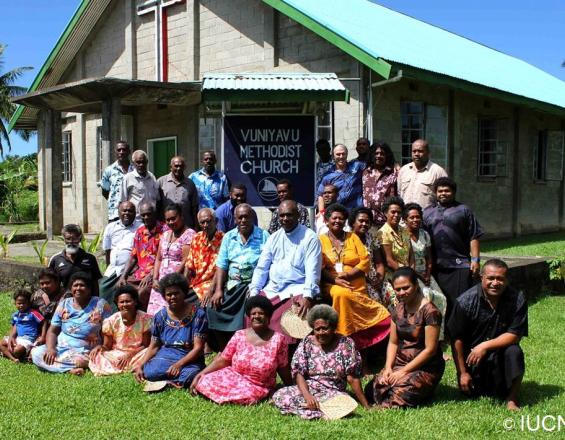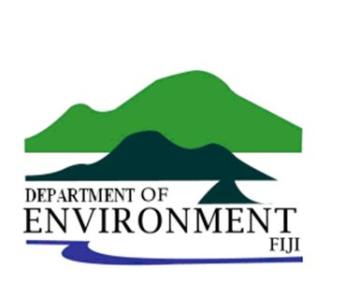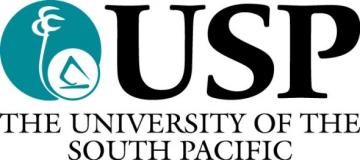
Cogestión entre conservación de la biodiversidad y derechos de pesca

La cogestión de la isla de Nasoata es una asociación que reúne sistemas de gestión formales e informales (nacionales, provinciales y comunitarios) para la conservación de la biodiversidad de la isla de Nasoata en apoyo de los propietarios de derechos de pesca tradicionales del pueblo de Nakorovou, provincia de Rewa, islas Fiyi.
Contexto
Défis à relever
La elaboración del plan de gestión pretende ayudar a los aldeanos a hacer frente a los problemas a los que se enfrentan como propietarios de tierras, como la caza furtiva de recursos en la isla y la zona intermareal circundante, las prácticas insostenibles de tala de manglares y cocoteros por parte de forasteros, y la falta de un marco de gestión adecuado y la necesidad de control y ejecución.
Ubicación
Procesar
Resumen del proceso
Bloques de construcción
Proporcionar la base científica y jurídica
Factores facilitadores
Lección aprendida
Consultas comunitarias reiteradas
Factores facilitadores
Lección aprendida
Visualizar de primera mano los retos y las soluciones
Factores facilitadores
Lección aprendida
Facilitar el Plan de Gestión de múltiples insumos
Factores facilitadores
Lección aprendida
Garantizar la aprobación del producto final
Factores facilitadores
Lección aprendida
En busca de un estatus internacional de gestión
Factores facilitadores
Lección aprendida
Impactos
Este esfuerzo se ha traducido en
- la propuesta del Gobierno de designar la isla de Nasoata como segundo sitio Ramsar de Fiyi y la elaboración de un plan de gestión que esboza el marco para la conservación de la isla
- mayor compromiso e interés de la comunidad en los esfuerzos de conservación de la isla
- aumento y renovación de la colaboración entre las partes interesadas en los esfuerzos de conservación de la isla tras un lapso de 3 años
- mayor y renovada confianza de los propietarios en el gobierno y las partes interesadas provinciales para aplicar con éxito las estrategias de gestión.
Beneficiarios
La comunidad de propietarios del pueblo, turistas y estudiantes, así como los pueblos vecinos.
Historia
Seru Serevi es un compositor musical y artista local de renombre en Fiyi y en la región del Pacífico Sur. Seru nació y creció en la aldea de Nakorovou y es sobrino del jefe de la aldea, Turaga na Tui Waina. Toda su vida ha vivido en estrecha relación con la "vanua" (tierra), la gente y el "yau bula" (recursos naturales). Seru está muy vinculado a Nasoata, ya que sus padres y los anteriores siempre habían recolectado cangrejos de fango, bivalvos y plantas medicinales, entre otras cosas, de la isla. La isla perteneció a varias familias de origen europeo e indio. Durante esta época, la isla se utilizaba como plantación de cocoteros, donde se criaban rebaños de ganado. A finales de la década de 1970, los habitantes de Nakorovou tuvieron que recomprar por unas dos mil libras la tierra que les había comprado un pirata por sólo un chelín en el siglo XIX. Los aldeanos se dan cuenta ahora de la importancia de Nasoata, no sólo por el rico valor histórico que tiene para su pueblo, sino por los medios de subsistencia que la isla mantiene -como en el pasado, la isla sigue manteniendo a los aldeanos con pescado, alimentos e ingresos-. La mayor amenaza que han visto los aldeanos a lo largo de los años es la caza furtiva y la falta de respeto de los vecinos en las zonas "tabu" (tabú). Seru afirma: "Nuestra gente ha respetado la necesidad de proteger la isla, su gente de fuera no respeta nuestros tabúes aunque lo hayamos difundido de pueblo en pueblo e incluso hasta el consejo provincial". El problema de vigilar Naosata es la distancia entre el pueblo y la isla y la necesidad de que alguien vigile la isla a tiempo completo. Seru cree que, gracias al plan de gestión, el marco propuesto y la ahora evidente sólida cooperación entre los aldeanos, la Oficina Provincial y los departamentos gubernamentales pertinentes, el futuro de Nasoata es más prometedor. Los aldeanos acogen a menudo a grupos de estudiantes de la universidad local (Universidad del Pacífico Sur) que visitan la isla para estudiar su biodiversidad y aprender cómo utilizan los aldeanos los recursos naturales. La protección de Nasoata, su inclusión en Ramsar y algunas actividades ecoturísticas es lo que Seru espera que sea el mejor resultado para la isla y esto se debe sobre todo al eficaz proceso consultivo.





